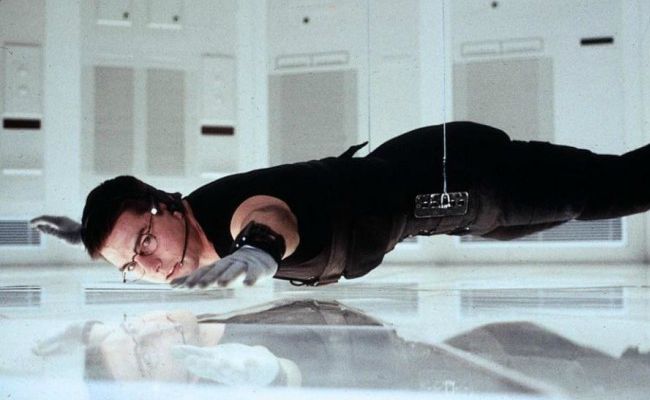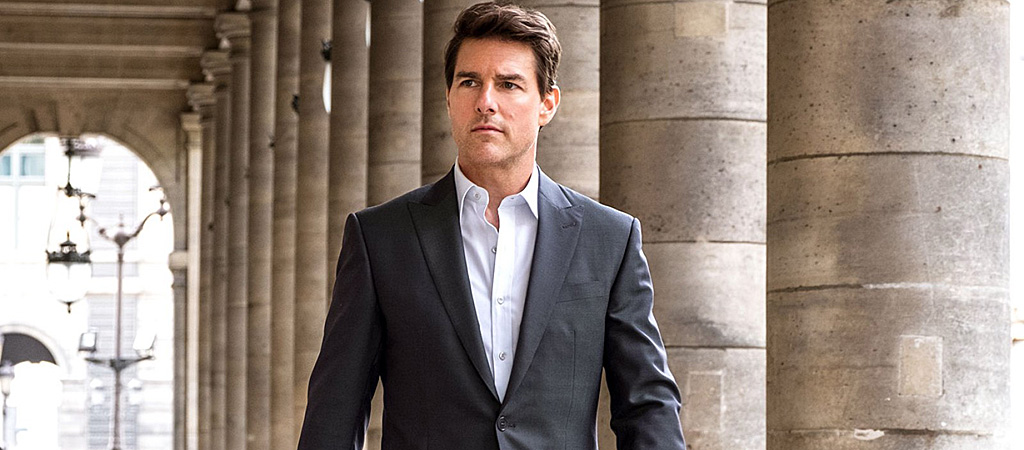Last week, the second trailer for the upcoming Fast & Furious “presentation” Hobbs And Shaw dropped, and it was just as bananas and ridiculous and awesome as the first trailer. While the movie won’t actually arrive in theaters for another four months, it already seems preordained to make $1 billion. That has much to do with the star power of The Rock and Jason Statham as it does with the draw of the Fast & Furious franchise, one of the most reliable brands for summer blockbusters in the early 21st century.
And yet, while giving all due props to Hobbs And Shaw — who knew The Rock would one day make a hyper-violent live-action redux of Moana that felt necessary?– I feel compelled to offer a caveat. As much as I enjoy the indelibly goofy and good-natured Fast & Furious franchise, the King Kong of modern action cinema, I must express my preference for the Godzilla of this genre, the Mission: Impossible movies. (The John Wick series is Mothra in the analogy, I guess — ascendent but not quite in the big boys’ class yet.)
As the biggest and best franchises situated outside the Marvel and DC monoliths, Fast & Furious and Mission: Impossible parallel one another in other crucial ways. They both position a central leading man (Vin Diesel and Tom Cruise) around a cast of supporting players that have been subbed in over the years to keep the movies vital. You can make obvious one-to-one comparisons in these supporting casts — Paul Walker in Fast & Furious is analogous to Ving Rhames in Mission: Impossible (the steady sidekick), Ludacris in Fast & Furious plays a similar role to Simon Pegg in Mission: Impossible (the comic relief who first appeared in one of the early sequels), and The Rock in Fast & Furious is sort of like Rebecca Ferguson in Mission: Impossible (the sexy badass who is both a friend and a foe).
Both franchises also have had similar arcs. While both began with well-regarded and successful origin films, they had to grow into their status as iconic tentpoles. Fast & Furious arguably didn’t achieve its signature tone — uber-muscular action that’s one part winking camp and one part dream logic — until the fourth film; Mission: Impossible hit its stride at about the same point, with 2011’s Mission: Impossible — Ghost Protocol. In a way, both franchises have only gotten better over time, peaking in their popularity and esteem in the back half of the ’10s.
For all their similarities, however, I must give the edge to Mission: Impossible. I have my reasons — four of them, in fact.

1. Mission: Impossible is a showcase for great directors
Whenever people rank Mission: Impossible movies, the one that inevitably winds up at the bottom is 2000’s Mission: Impossible 2. But I would argue that Mission: Impossible 2 is an example of what makes this franchise so interesting. That’s because it’s a film clearly made by an auteur, the legendary Hong Kong action master John Woo. Mission: Impossible 2 is loaded with Woo trademarks: operatic slo-mo shootouts, gunmen who fling themselves through the air while firing two pistols, omnipresent doves. It’s also a little slow and has virtually no plot. But it’s an actual movie and not merely a product that hits the marks in a predictable fashion.
While there are exceptions (Wonder Woman, Black Panther, Thor: Ragnarok), most modern comic-book movies look like they were directed by the comments section at Rotten Tomatoes. But Mission: Impossible movies feel like extensions of the people who make them, whether it’s the Hitchcockian suspense of Brian De Palma’s Mission: Impossible, the workmanlike universe-building of J.J. Abrams’ Mission: Impossible 3, or the twisty-turn-y cartoon-like pyrotechnics of Brad Bird’s Mission: Impossible — Ghost Protocol.
2. Mission: Impossible has the best stunts
Moving forward, Mission: Impossible appears to have established a house style — Christopher McQuarrie directed both 2015’s Mission: Impossible — Rogue Nation and 2018’s Mission: Impossible — Fallout, and is slated to make the next two films in the series, set for 2021 and 2022. Under McQuarrie’s direction, Mission: Impossible has exhibited a gritty, old-school style that grounds the inherent outlandishness of these movies in stunts performed in the real world, without heavy use of CGI. When Ethan Hunt hangs on the side of an airplane, or engages in a high-speed helicopter chase, or jumps between buildings, you can be assured that Tom Cruise is actually doing those things.
This undoubtedly ups the wow factor when watching Mission: Impossible, while also making them seem relatively … is “realistic” the right word? Probably not. But Mission: Impossible is slightly more grounded in reality than the sort of “car races a nuclear submarine”-style action you see in the latter-day Fast & Furious films.
3. Mission: Impossible cast Philip Seymour Hoffman as one of the best modern action-movie villains
Deckard Shaw is the greatest villain of the Fast & Furious franchise, though he was such a cool character that he eventually became a good guy. In the Mission: Impossible movies, however, the best villain — Mission: Impossible 3‘s Owen Davian, played by Philip Seymour Hoffman — remained the personification of evil right up until Ethan Hunt finally extinguished him. But man … what a gloriously awful character! Davian is another example of Mission: Impossible adding a touch of verisimilitude in the midst of so much action-movie silliness. Hoffman plays him with the cold-blooded naturalism that you would expect if Paul Thomas Anderson was hired to make a Mission: Impossible film. (Actually, can we make that happen? Mission: Impossible — Phantom Thread totally works as an M:I movie title.)
4. Tom Freaking Cruise
He’s the San Antonio Spurs of movie stars, and the Mission: Impossible franchise has become his defining work, spanning nearly a quarter-century of his career. There was a time when Cruise did things in addition to making these movies — Mission: Impossible 2 was delayed a few years because Cruise was busy making Eyes Wide Shut with Stanley Kubrick. But now his life seems to revolve around making the next Mission: Impossible as amazing as possible. For Fallout, he learned how to fly a helicopter and then, when he broke his ankle, he did rehab for 12 hours a day for six weeks. He basically is Ethan Hunt at this point. And you can never bet against Ethan Hunt.








